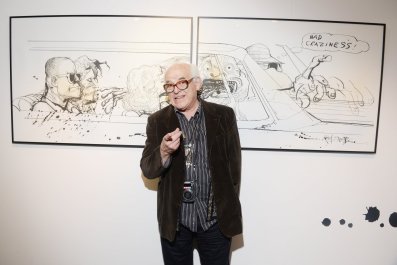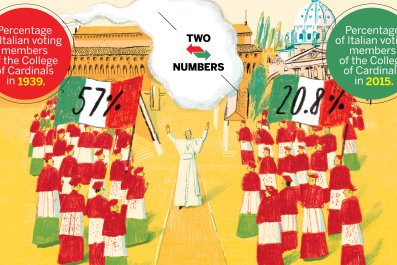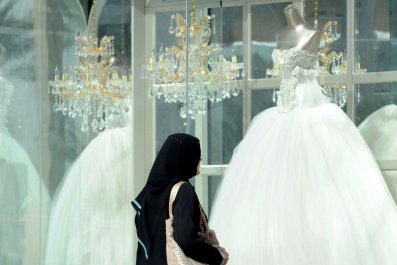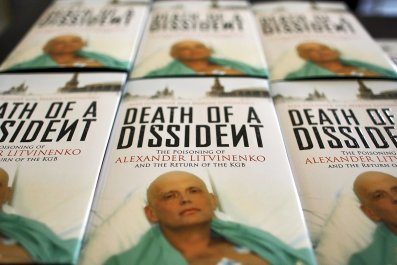Who was the real Anne Boleyn? In the film Anne of a Thousand Days, she is the brave girl who loves a king. In the novel The Other Boleyn Girl she is the fallen woman, her brother's lover. Now we are to meet the Anne Boleyn of the BBC adaptation of Hilary Mantel's Wolf Hall. Vindictive, calculating and political, this Anne sets out to marry Henry VIII and to destroy his heroic servant, Thomas Cromwell.
The historical Anne was born the daughter of the prominent courtier, Sir Thomas Boleyn. But we don't know exactly when, and much else about her is lost in myth. After Anne's execution for treason, Henry VIII's subjects didn't keep pictures of the fallen queen, and the only contemporary image of her that survives is on a coin so damaged you cannot see the middle of her face.
The paintings of Anne we know – the most famous being that of her wearing a necklace adorned with a "B" – were painted after both Anne and Henry were dead. The woman in that particular picture may not even be Anne. In her lifetime she used "A", for Anne, as a cipher – not "B" for Boleyn. It could equally be a picture of a Belinda or a Beryl.
The contemporary descriptions of what Anne looked like are, however, vivid. She was not beautiful. Her skin was sallow, as was that of her daughter Elizabeth, who made her face white with make-up. Anne's nose was also rather large, but she was chic, with black eyes she used to great effect. It was said that they could "read the secrets of a man's heart". Educated in the courts of Burgundy and France, Anne was an expert in the art of courtly flirtation. But it is wrong to suggest that she set out to capture the king. When he fell in love with her in 1526, Henry had ended an affair with Anne's sister Mary, who had been married off to a gentleman.
It was a pattern the king had followed with mistresses before. Anne, who had already attracted the attentions of many high-born suitors, was disinterested. She resisted Henry's attentions in the hope that he would move on, but her behaviour appealed to his love of chivalric romances and their unobtainable heroines.
In any case, at this stage in his life, Henry needed a wife, not a mistress. The queen, Katherine of Aragon, could not give him a son and heir, and Anne was a possible replacement. While Henry did not approve of divorce and was therefore reluctant to leave Katherine, he could argue that his marriage to her was invalid. She was his brother's widow and this, he claimed, broke an inviolable biblical injunction against marrying your brother's wife. The Pope disagreed.
The arguments with Rome went on for years and Anne was stuck. No courtiers would take on the king as a romantic rival. She would either marry Henry soon, or end up barren and unwed. But Anne was fiercely intelligent and resourceful, and she looked for solutions in the movements for religious reform that were sweeping Europe at the time. Contrary to myth, Anne was never a Protestant. But she fed Henry with selected readings that supported the view that kings had rightful authority over the church. Henry already associated himself with King Arthur, whom, he believed, had wielded an imperial power over the English church, as well as the state. He became convinced the papacy had usurped this power.
In 1533, Henry finally broke with Rome and had his marriage to Katherine annulled. The already-pregnant Anne was now his queen. But Katherine remained much-loved, and women in particular resented Henry's abandonment of his first queen. Anne acquired a new reputation as a "goggle-eyed whore".

At court, Anne was also envied for her new position, and detested for her association with the break from Rome. Her position was further weakened when her first baby proved to be a girl. But, undeterred, she continued to play politics for the highest stakes; she was never a mere victim. Anne backed the reign of terror Henry now launched with Thomas Cromwell upon opponents of his religious changes, and she insisted her daughter Elizabeth was given precedence over Katherine's daughter Mary, who was declared a bastard. Yet still she failed to produce a healthy son, and after she miscarried a male foetus in January 1536, Henry lost hope that she ever would.
He began complaining that Anne had seduced him into marrying her – an accusation that carried suggestions of witchcraft. He also showed a growing romantic interest in one of her maids-of-honour, Jane Seymour. It was at this time that Anne made her fatal enemy: the king's leading servant, Thomas Cromwell, played in the forthcoming series Wolf Hall by Mark Rylance.
Anne wanted the money raised from the closing of monasteries to go into education; Cromwell intended to pour it into the king's pocket. He was never the upstanding figure of Hilary Mantel's invention. Only one of the pair would survive the quarrel – and it wasn't Anne.
Cromwell used the snatches of flirtatious conversation Anne had enjoyed with male courtiers (and a young musician) to weave a conspiracy. She was accused of adultery with several men, among them her own brother. Those historians who claim that adultery against the king was, at that time, an act of treason punishable by death, are wrong. The claims of adultery were simply used to colour the real charge: together, Anne and her "lovers" were accused of plotting to kill the king, in order that Anne might be free to marry one of them. The king's close servant and friend, Sir Henry Norris, was put in the frame.
Anne and her co-accused were arrested, incarcerated in the Tower of London, and charged. In court, her brother described how they had joked about the king's poor sexual performance and his bad poetry. This gave substance to the lurid stories of Anne's sexual exploits. But only one of the accused confessed to having slept with the queen – the musician Mark Smeaton. It was later said that Smeaton had been tortured, though evidence for this is elusive. He seems to have been a fantasist, a nobody who became a somebody by claiming to have slept with Anne.
When Anne was found guilty of the murder plot, Henry decided she should be beheaded with a sword rather than with the traditional axe. Historians have said this decision was made in recognition of her many years in France, where nobility were traditionally executed in this manner, and because it offered a more dignified end. But in truth, Henry didn't care a jot for Anne's feelings. His only thoughts were for himself.
In Thomas Mallory's The Death of Arthur, the king sentenced his adulteress, Queen Guinevere, to death by burning (although it was never carried out). The sword was the symbol of Camelot, of a rightful king, and of masculinity. Once again, Henry was associating himself with King Arthur.
Contrary to popular belief, Anne had never been the reason that Henry broke with Rome. He did so because of his obsession with having a son, and his desire to have more power over the church. He would go on to use that power to secure the annulment of a second marriage; to his Catholic subjects, the new Church of England, Parliament, and Henry himself, Anne had never been his wife at all. Eleven days later, he married his new conquest, Jane Seymour.
"I heard say the executioner was very good and I have but a little neck," Anne said, the day before her execution, as, laughing, she put her hands round her throat. It was, at least, to be a quick death. Her head fell with one blow, her eyes and lips still moving as it landed on the straw. Her real life was over, but the many stories of Anne Boleyn were about to begin.
Leanda de Lisle is the author of 'Tudor: The Story of England's Most Notorious Royal Family'.




























